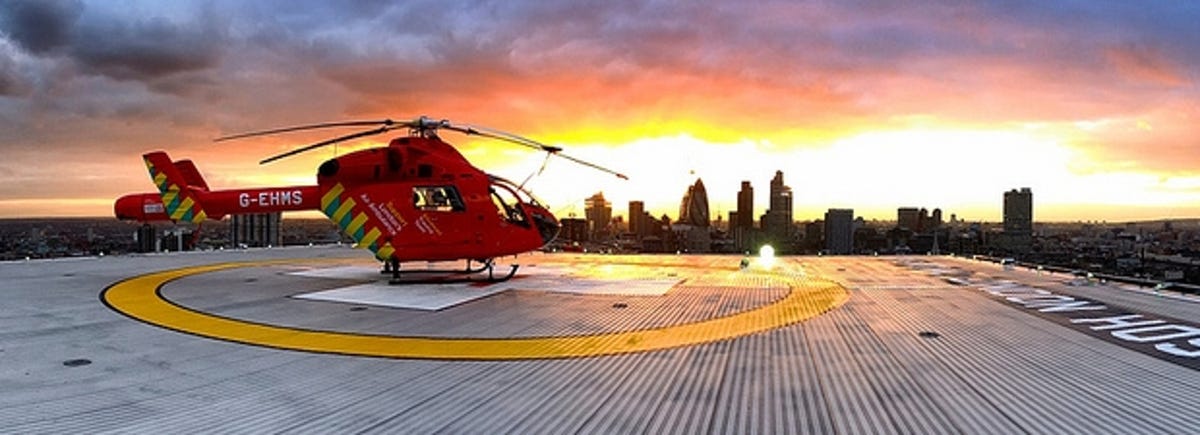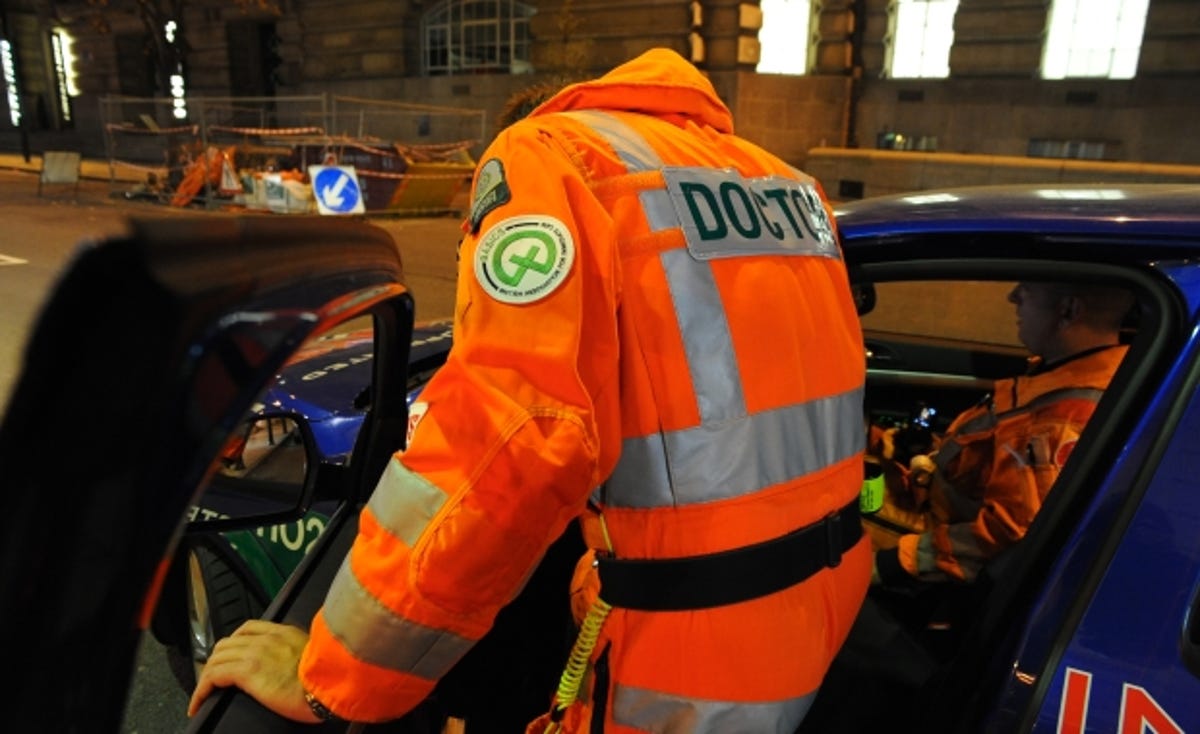
London’s Air Ambulance is using EE’s 4G network to power its sat-nav system. The capital’s rapid-response helicopter medics previously relied on paper maps because 3G and conventional sat-nav systems were too patchy at high speed.
Using 4G means mapping apps refresh fast enough to keep up with the twin-engine choppers and 2-litre Skoda Octavias the medical charity uses.
It also means each mission location will be wirelessly transmitted to a special app, currently in development, instead of the current laborious printouts that ensure the pilot and navigator have the correct information.
I asked EE’s Aaron Childs which tablets it was using, but he was reticent to get specific. “The devices used are not important, as the technology could work on any platform,” he said. He was also unwilling to discuss whether the company was providing its services for free, but hinted there was a “charitable aspect” to the arrangement.


Situations where the charity would respond include car and train crashes, serious falls, work accidents and assaults such as stabbings and shootings. In such dire circumstances, every second counts.
“Our patients have started the dying process as soon as
their injury has occurred. Many of them don’t have a pulse, so the time you have to save a life
is very short and saving seconds wherever we can all adds up and makes a difference to their
outcome,” said Dr Gareth Davies, medical director of London’s
Air Ambulance. “Take-offs will potentially be minutes sooner.”
“It’s a big change
from the current reliance on map books,” Dr Davies adds. “And unlike using a map book, if you do go wrong, the
app corrects you immediately.”
EE is also helping the charity manage its data to help increase its efficiency, with its Standard Operating Procedures — used by
other air ambulances worldwide — hosted online by a bespoke EE cloud app.
EE recently announced it was doubling the speed of its 4G mobile Internet to a top speed of 80Mbps. Superb for London’s Air Ambulance, no doubt, but not so much use for the average punter, whose meagre monthly data allowance will be used up in seconds. EE’s quarterly results, out today, showed over 300,000 people are now using its costly 4G service.
Have you found EE’s 4G useful for mapping apps? Or is it just too expensive for those of us sticking to the speed limit? Rapidly respond down in the comments, or over on our anaesthetised Facebook page.
Update: Added comment from EE’s Aaron Childs, and clarified that the location app is currently in development and is yet to be deployed.
Image credit: London’s Air Ambulance, Lee Parker



